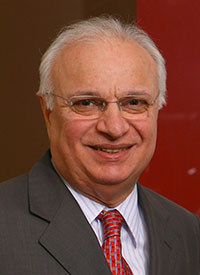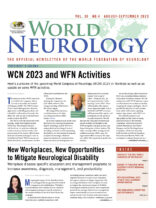
Raad Shakir
By Prof. Raad Shakir
This committee is the backbone of the federation. Although the WFN trustees form the nominating committee, it functions outside their direct control. This is crucial as its decisions form the basis of the future leadership and function of the organization. The idea of an independent committee to search, approve, suggest, and nominate appropriate future leaders is not unique to the World Federation. The composition of the Nominating Committee has to be representative of the whole WFN across the globe.
Historically, the Nominating Committee started in earnest in 1965 following the retirement of the WFN first president Ludo van Bogaert. The first meeting was in Vienna under the chairmanship of Helmuth Tschabitscher (Austria), the recommendation was to propose Macdonald Critchley as WFN’s second president.
Currently, a chair and six members form the Nominating Committee. The members are from the six WFN regions. The committee functions are laid out in the WFN memorandum and articles of association. Article 6 states the functions of the committee are to “choose a list of candidates” for all positions and publish the list to all member societies.
The Nominating Committee is also instructed to “solicit” nominations for officers and trustees by approaching them directly. This is done to balance the composition of the trustees in the WFN. It is vital that, as much as possible, all the six regions of the world are represented and any duplication or “dominance” of any region is not allowed to occur, if at all possible. There has been a time when one region or even one country has been overrepresented, but this should be the exception and not the rule.
The list of candidates agreed by the Nominating Committee is published on the WFN website and World Neurology six months prior to the Council of Delegates meeting and further names may be added (subject to review by the Nominating Committee) if submitted by five or more approved delegates at least 30 days prior to the date of the council vote.
In selecting candidates, their professional status, contribution to the WFN, and future commitment to growth and development of the WFN are paramount.
The Nominating Committee has to consider geography and gender in all its considerations. The committee can supplement applicants, as it deems appropriate. This will eventually be subject to the WFN Council of Delegates vote.
It is quite possible that some candidates meet the guidelines, but for a variety of reasons cannot be shortlisted by the Nominating Committee. This exclusion does not in any way reflect their unsuitability.
The committee’s proceedings and decision-making process is held in private to avoid any outside pressures and influences. It is understood that regions and delegates canvas for their preferred candidates, and this is acceptable as long as it falls outside the Nominating Committee’s structure and function.
These rigorous criteria and procedures have evolved since the inception of the WFN and continue to serve the organization, ensuring its integrity and inclusivity. •
Prof. Raad Shakir CBE FRCP is a past president and current chair of the Nominating Committee of the WFN.
